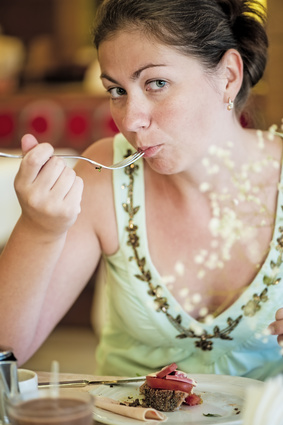Eating Out
by Surina Ann Jordan

Healthy eaters must be cautious about eating out. Just because it looks good does not mean that it is good for you. There was a time when eating out was one of those events that happened so rarely that there was little to no impact to our health. In fact according to the Atlantic Magazine and the Bloomberg Business Week, 30 years ago, Americans spent 17% of its income on food. Today Americans spend only 11%. But they also indicated that we are spending almost 50% more on meals outside of home than we were in prior years.
Americans reportedly spend 7% of its family budget on food at home compared to China at 21% and Egypt at 41%.
Our healthy recipes work well at home and for the occasional potluck dinner scenario. So we thought we would provide a few suggestions for those of us who find themselves eating out more than they would like to.
Remember your food philosophy
Just as we are at home it is important not to just go with the flow without thinking consciously about what you will be eating. We must make ever morsel count and not just go for the fillers (the fried, buttery sauce and refined). Stay aware of the fact that these filler foods taste good and look good. They may have also been a source of comfort for you in the past, which makes us more vulnerable to them.
Just like eating at home, make decisions
about food based on what your body needs to be healthy.
Eat colorful and simple foods.
If your meals include fruits and vegetables that are at least three different colors, you have the nutritional properties of a healthy meal. Also, eat foods that have few ingredients and little processing. Remember that every non-food ingredient (preservatives, fats, additives, and fillers) that is ingested causes the body extra work. Prior to digestion, the body must rummage through these non-foods to find nutrients that can be used for cell development and repair. This extra work takes energy (life) from the body.
Never arrive at an event hungry.
Try not to arrive so hungry that you cannot think. If that is the case, order a light soup or small salad first prior to your meal. (Avoid eating bread as your meal starter.) This will take the edge off so that you can make better choices.
In my book, The Seven Disciplines of Wellness, The Spiritual Connection to Good Health, I provide two questions to ask yourself when selecting a food:
- What did this food look like in its original state?
- How much processing was needed in order to make this dish?
We want to eat foods that are as "intact" as possible.
Less is Best
Use a smaller plate and start with smaller portions. This makes it safer to a little more. Consider splitting an entree with someone or immediately boxing half of it up prior to eating. Eat lots of fresh fruits and vegetables. Remember animal protein is a major source of fat, cholesterol and disease according to the National Institute of Health report on Trends in Meat Consumption in the United States. Vegetables and grains provide a better source of protein.
Plan your meals
Develop a food strategy before it is time to eat. Decide what you are
going to eat (and drink) and determine your limits before you go out. Don't let eating out set you back.
References:
NIH Public Access, Trends in Meat Consumption in the U.S., http://www.ncbi.nlm.nih.gov/pmc/articles/PMC3045642/pdf/nihms-253312.pdf
Jordan is the author of The Seven Disciplines of Wellness, The Spiritual Connection to Good Health
Return from Eating Out to Healthy Tips
Visitors to this site also read:




